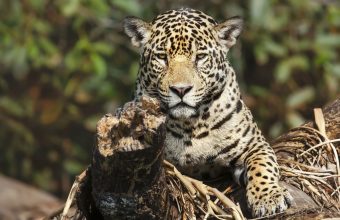How To See Wildlife In The Pantanal
A guide to wildlife watching in the Pantanal
Move over Amazon, the watery world of the Pantanal is hands-down the best place for wildlife watching in all of South America.
The aquatic environment nurtures a bewildering range of plant and animal species. Visitors stand a fine chance of watching the world’s largest parrot (hyacinth macaw), the largest rodent (the pig-sized capybara), the longest snake (green anaconda) and greatest gathering of crocodilians (yacaré caiman), as well as the New World’s biggest cat (jaguar) and South America’s heaviest land mammal (South American tapir).
Even the place itself stands atop a podium: the Pantanal is the world’s biggest wetland – ten times bigger than Florida’s Everglades and 15 times the size of Botswana’s Okavango Delta.
Three-quarters of South America’s aquatic heart lies in western Brazil – which harbours the jaguar’s share of tourism – with slithers extending into eastern Bolivia and northern Paraguay.
Here's our essential guide to the Pantanal's incredible wildlife and where – and how – to see it all.
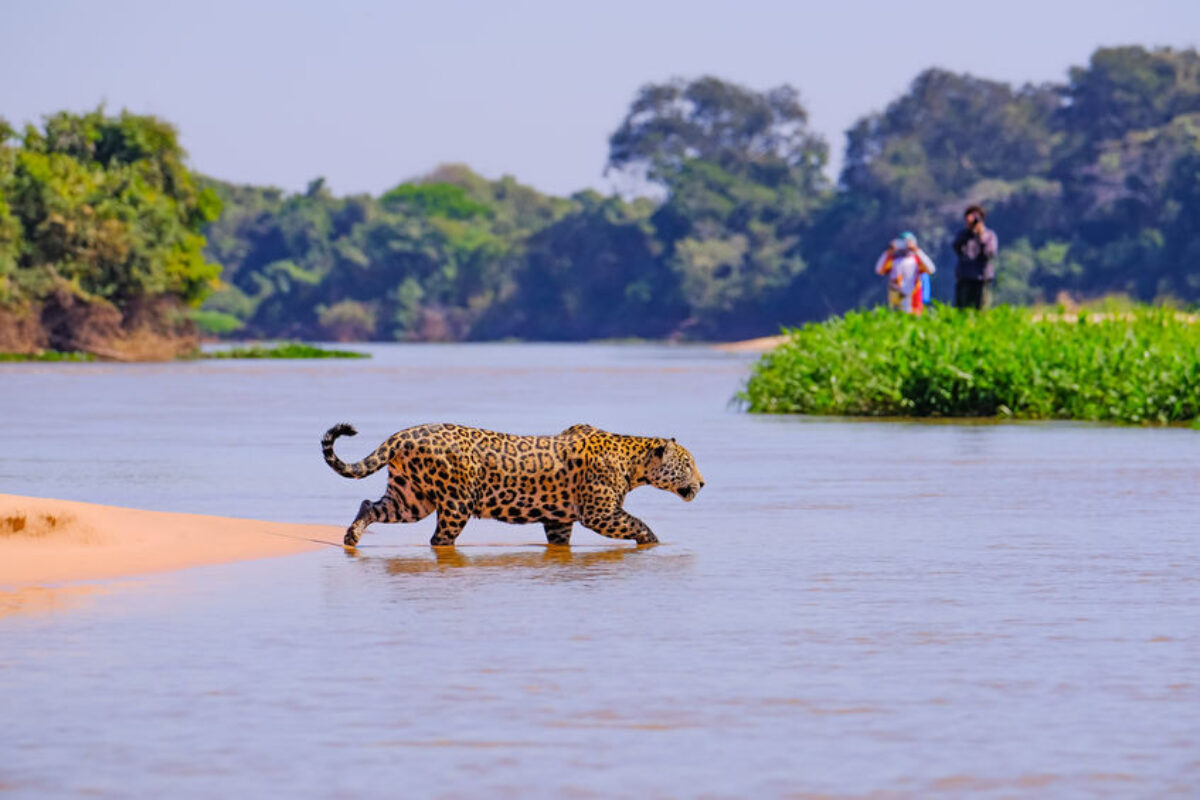
Jaguar in the water, Pantanal
How to see wildlife in the Pantanal
Key species and how to spot them
The Pantanal is all about wildlife. Particularly during the dry season, when dwindling ponds heave with animals, numbers can challenge credulity. Best of all, the spectacle is in plain view and at close range. But whenever you visit, there’s plenty to see because the Pantanal serves as an ecosystem melting pot, hosting animals from grasslands, wetlands and forests.
Almost as diverse are the activities offered by lodges to help you get close to wildlife. You can take a birdwatching walk through woodland before breakfast, before boarding an open-sided vehicle to scour fazenda (ranch) savannah for deer. After a siesta – thankfully, wildlife takes a breather during midday heat – you might explore rivers by canoe, looking for giant otter, or ride a horse into the wetlands. You may take your sundowner gawping at caiman crowding out a lagoon or spend it aboard a motorboat after a jaguar-seeking excursion along the Cuiabá River. After dinner, it’s time to look for nocturnal animals such as nightjars or crab-eating foxes, and smaller fry such as frogs.
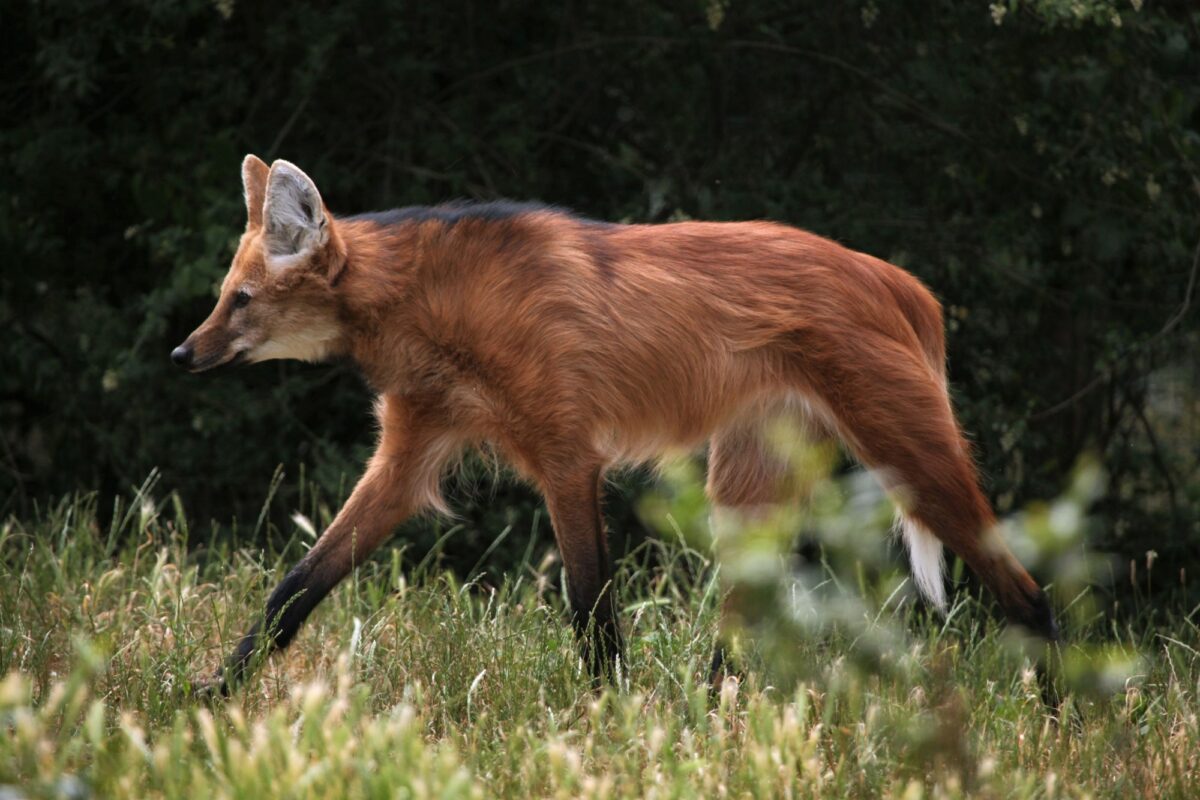
The Pantanal's maned wolf – resembling a fox on stilts
The Pantanal’s ‘big five’
Like Africa, South America has it's own big five. The maned wolf – like a fox on stilts – and giant anteater inhabit savannahs, the latter both along the northern Transpantaneira (notably at Pouso Alegre) and Mato Grosso do Sul (particularly Fazenda San Francisco).
South American tapir – a bizarre creature recalling both horse and pig – occurs at many lodges. Several families of giant otter – nearly two metres worth of sleek, aquatic predator – have become used to human admirers, particularly along the Pixaim River and quiet tributaries of the Cuiabá River, east of Porto Jofre.
Where to see jaguars in the Pantanal
The final member of the big five is the creature that every visitor to the Pantanal yearns to see; Jaguars are South America’s apex carnivore, a musclebound cat capable of felling even large caiman.
There is no better place to see them than the Pantanal – specifically along and off the Cuiabá River in Mato Grosso between July and October. Here, a remarkably dense population of animals has become relatively habituated to people, and guides have become familiar with their hangouts. The felines often sun- or shade-bathe on riverbanks, allowing visitor-toting boats to bob offshore at a respectful distance.
Even with such advantages, however, seeing a jaguar is not guaranteed. Maximise your chances by spending at least two days on the river, concentrating efforts in the early morning and late afternoon. Should you encounter one, however, prepare to be joined by other boats: guides help one another by sharing live information on jaguar whereabouts.
Away from the Cuiabá River, prospects are lower. Nevertheless, driving slowly along the final 20km of the Transpantaneira may serve you well, while in Mato Grosso do Sul, Fazenda San Francisco probably has the highest success rate.
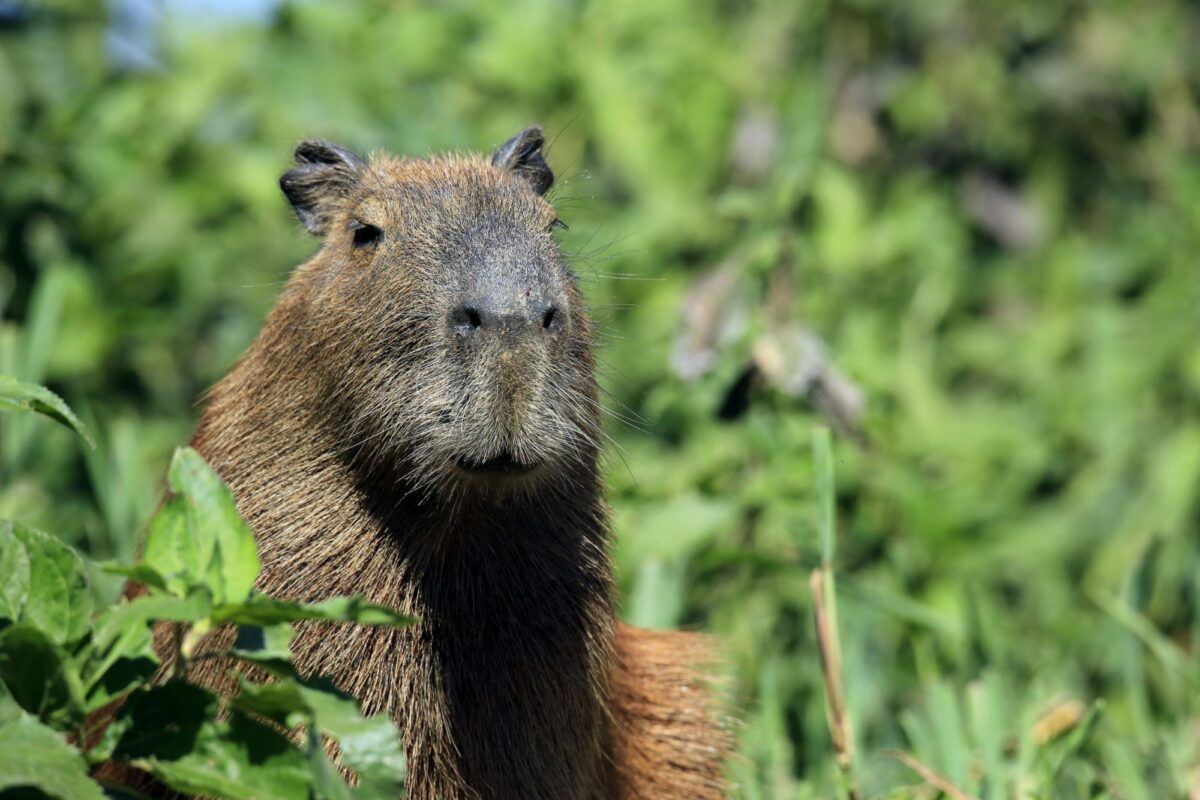
The Pantanal capybara
Other mammals
The jaguar is not the only Pantanal cat. Many visitors yearn to see ocelot, in particular, and – ironically, given its name – Jaguar Lodge has managed to coax these mid-sized cats into visiting each night. Other mammals forming part and parcel of a Pantanal visit include southern tamandua (a tree-climbing anteater), armadillos and the raccoon-like South American coati.
Primates include black howler whose far-reaching vocalisations provide pre-dawn wake-up calls. Domestic cattle aside, the most common mammal you will encounter is capybara. Groups of this pig-sized rodent graze waterside vegetation or lounge in muddy hollows.
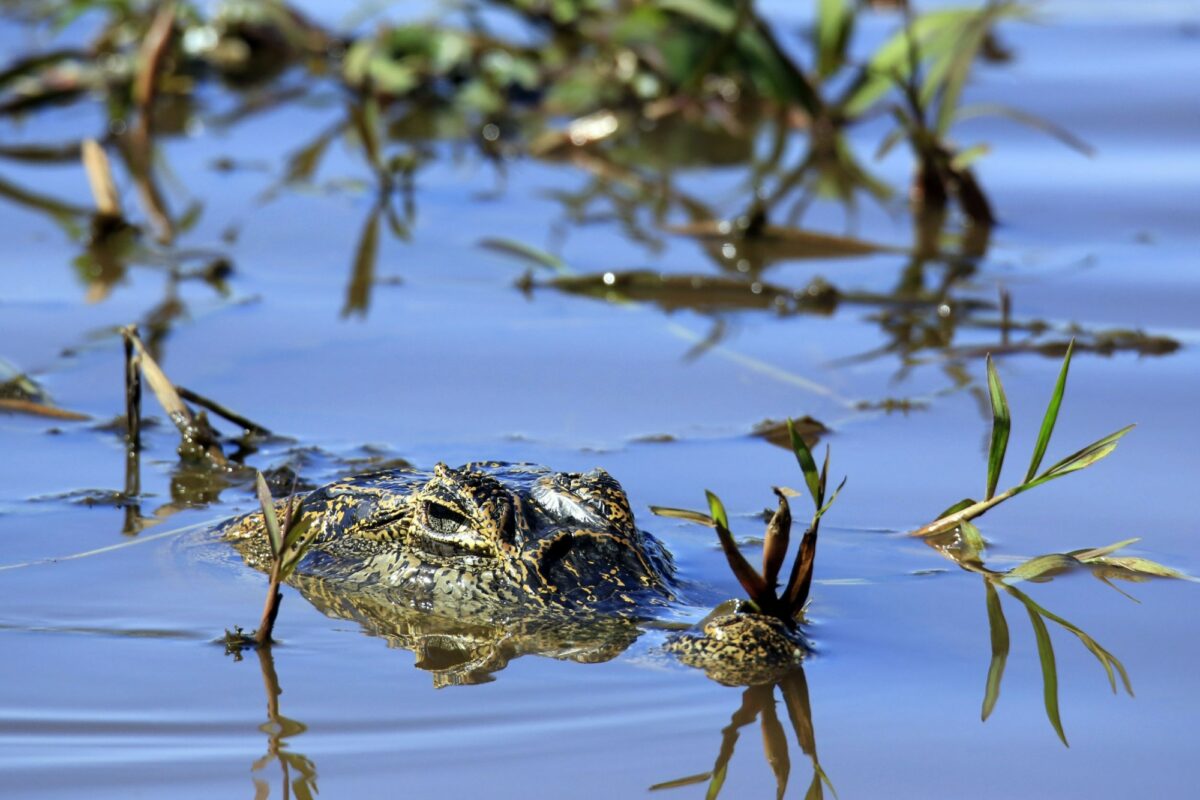
A caiman at Porto Jofre
Reptiles
The most abundant reptile is the yacaré caiman. For crocodilians, these are relatively small and innocuous – but their dry-season gatherings can be mighty, with hundreds cramming into lagoons. An impressive array of lizards ranges from green iguanas (the creature behind the dragon fable) basking on riverside trees to tegus crashing through shrubbery and anoles scampering over bare ground.
Snakes also feature, the most fascinating being two types of anaconda – green (huge but rare) and yellow (‘only’ very large but more regularly encountered, often under road bridges). If you want to see amphibians, head out at night, particularly when conditions are warm and humid. Rococo toads visit lodge buildings to munch on insects attracted by artificial lights, while tracking down strange calls may lead you to tree-frogs and their ilk.
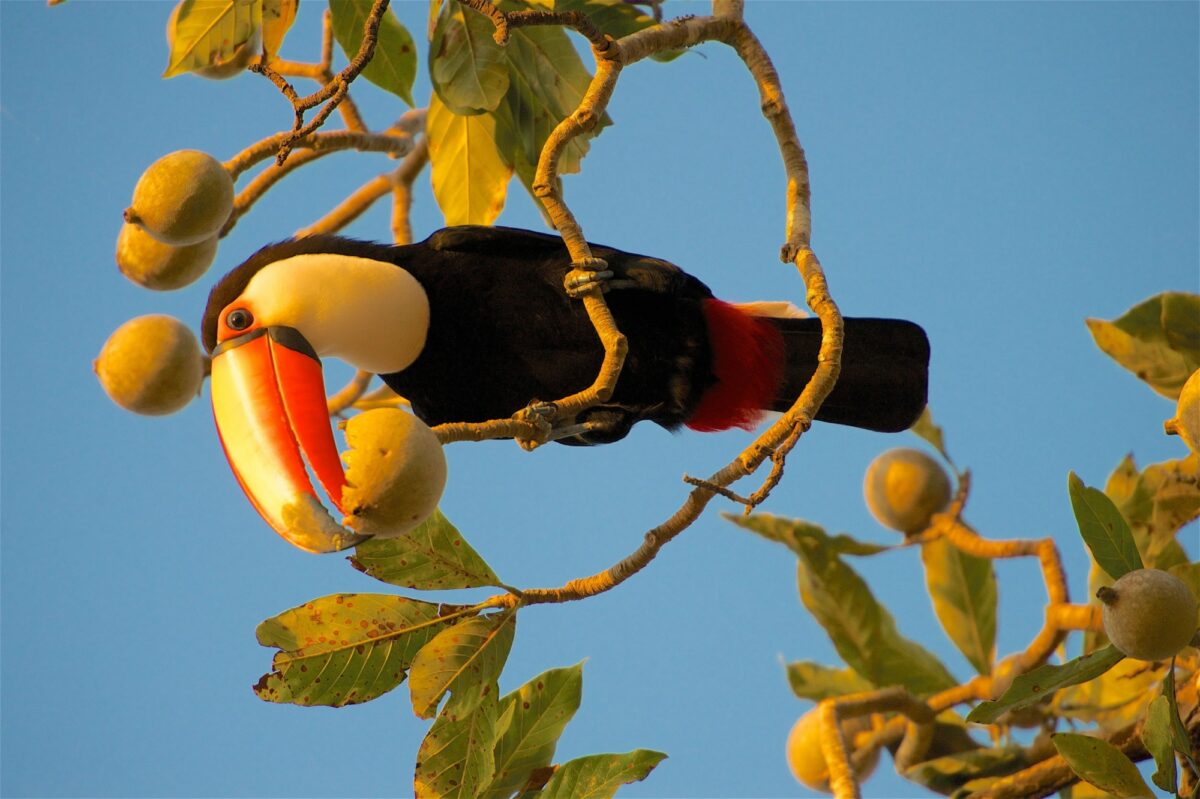
A toucan feeding on wild figs
Birdwatching in the Pantanal
Alongside capybara and caiman, the quintessential Pantanal wildlife spectacle involves congregations of long-legged waterbirds – egrets, storks, ibises and herons feasting on trapped fish. Jabiru is the most iconic; this stork boasts an inflatable crimson throat and a 2.5m long wingspan. Some lodges erect viewing platforms near the giant bird’s enormous, throne-like nest, granting privileged insights into its family life. Among other waterbirds, look for roseate spoonbills with their vivid colouration, while anhingas slink around, snake-like and mostly submerged, as they hunt fish.
Not all waterbirds are extrovert – so it pays to know where to look. Capped herons are demure creatures favouring quieter pools shunned by other birds. Sunbitterns – which startle would-be predators by flashing their wings to reveal what appear to be giant eyes – frequent shady margins of slow-flowing rivers. Here, they keep company with all five South American kingfishers, as well as birds of prey such as snail kite and great black hawk.
Whilst water serves as a magnet for many birds, a wider variety of feathered creatures actually inhabits Pantanal forests. An early-morning birdwatching walk under the canopy can pay unexpected dividends, particularly if you are accompanied by a guide who recognises the various calls that emanate from bough or bush. Sylvan stars included the flame-crested helmeted manakin, the shimmering rufous-tailed jacamar and the punk-headed bare-faced curassow. There are even birds that look like trees: the great potoo is a nightbird that evades day-time predation by mimicking a broken-off branch.
Plenty of birds inhabit more open areas too. The most dramatic is the endangered and vividly blue hyacinth macaw, which often nests near lodge buildings – safe from the covetous gaze of illegal bird collectors who decimated the species’ population during the 1980s. Hummingbirds visit flowers around lodge buildings, while yellow-billed cardinals bicker outside stables. Burrowing owls, meanwhile, bob their heads while perched atop fenceposts and anthills. Once you get your eye in, you will spot Pantanal birds wherever you look.

